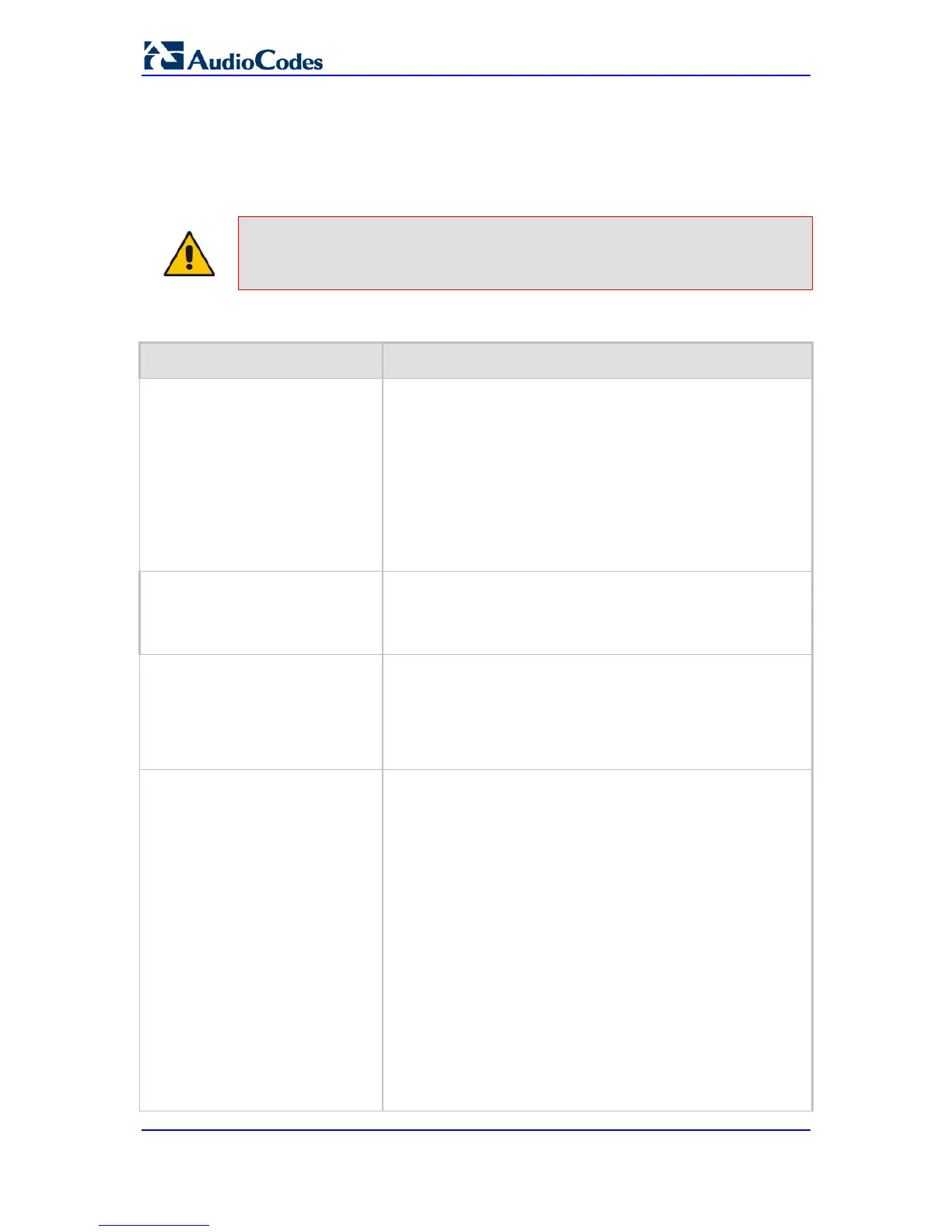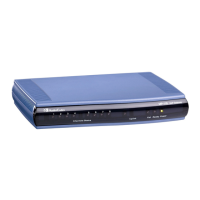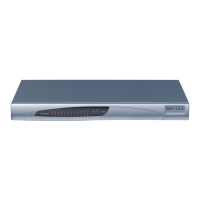User's Manual 556 Document #: LTRT-65417
MP-11x & MP-124
43.10.4 Voice Mail Parameters
The voice mail parameters are described in the table below. For more information on the
Voice Mail application, refer to the CPE Configuration Guide for Voice Mail.
Note: Voice Mail is applicable only to FXO interfaces.
Table 43-38: Voice Mail Parameters
Parameter Description
Web/EMS: Voice Mail Interface
[VoiceMailInterface]
Enables the device's Voice Mail application and determines the
communication method used between the PBX and the device.
[0] None (default)
[1] DTMF
[2] SMDI
Note: To disable voice mail per Hunt Group, you can use a Tel
Profile with the EnableVoiceMailDelay parameter set to disabled
(0). This eliminates the phenomenon of call delay on lines not
implementing voice mail when voice mail is enabled using this
global parameter.
Web: Enable VoiceMail URI
EMS: Enable VMURI
[EnableVMURI]
Enables the interworking of target and cause for redirection from
Tel to IP and vice versa, according to RFC 4468.
[0] Disable (default)
[1] Enable
[WaitForBusyTime]
Defines the time (in msec) that the device waits to detect busy
and/or reorder tones. This feature is used for semi-supervised
PBX call transfers (i.e., the LineTransferMode parameter is set
to 2).
The valid value range is 0 to 20000 (i.e., 20 sec). The default is
2000 (i.e., 2 sec).
Web/EMS: Line Transfer Mode
[LineTransferMode]
Defines the call transfer method used by the device. This
parameter is applicable to FXO call transfer.
[0] None = (Default) IP.
[1] Blind = PBX blind transfer:
After receiving a SIP REFER message from the IP side,
the device (FXO) sends a hook-flash to the PBX, dials
the digits (that are received in the Refer-To header), and
then immediately releases the line (i.e., on-hook). The
PBX performs the transfer internally.
[2] Semi Supervised = PBX semi-supervised transfer:
After receiving a SIP REFER message from the IP side,
the device sends a hook-flash to the PBX, and then dials
the digits (that are received in the Refer-To header). If
no busy or reorder tones are detected (within the device
completes the call transfer by releasing the line. If these
tones are detected, the transfer is cancelled, the device
sends a SIP NOTIFY message with a failure reason in
the NOTIFY body (such as 486 if busy tone detected),
and generates an additional hook-flash toward the FXO

